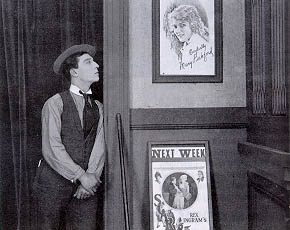
Filmmaker Morgan Spurlock will discuss his work in the Corcoran auditorium this Tuesday, February 2 at 7 pm.
Mr. Spurlock is best known for the documentary
Super Size Me, which chronicles the effects of eating exclusively McDonald's meals for thirty days. (They weren't good.)
Super Size Me was the first documentary to make it to
The New York Times' list of Top Ten Films Now Playing and was nominated for an Academy Award.
His current project is
30 Days, the documentary television series for which he and other subjects have tried out an unfamiliar job, way of life, or social setting for a month.
Mr. Spurlock will be (briefly) introduced by your instructor for this course, Bernard Welt.
The Special Events Office wants you to know they'd love it if Corcoran students attended this interesting event. Please contact them about attending, or show up early to inquire about seats.
 Ran across this on the internet today... It was like a mash up of pop culture and the beginning of film in an institutional space... loads of commercial interests in this make it seem like such an obvious show, but I think it still seems cool despite that.
Ran across this on the internet today... It was like a mash up of pop culture and the beginning of film in an institutional space... loads of commercial interests in this make it seem like such an obvious show, but I think it still seems cool despite that.










